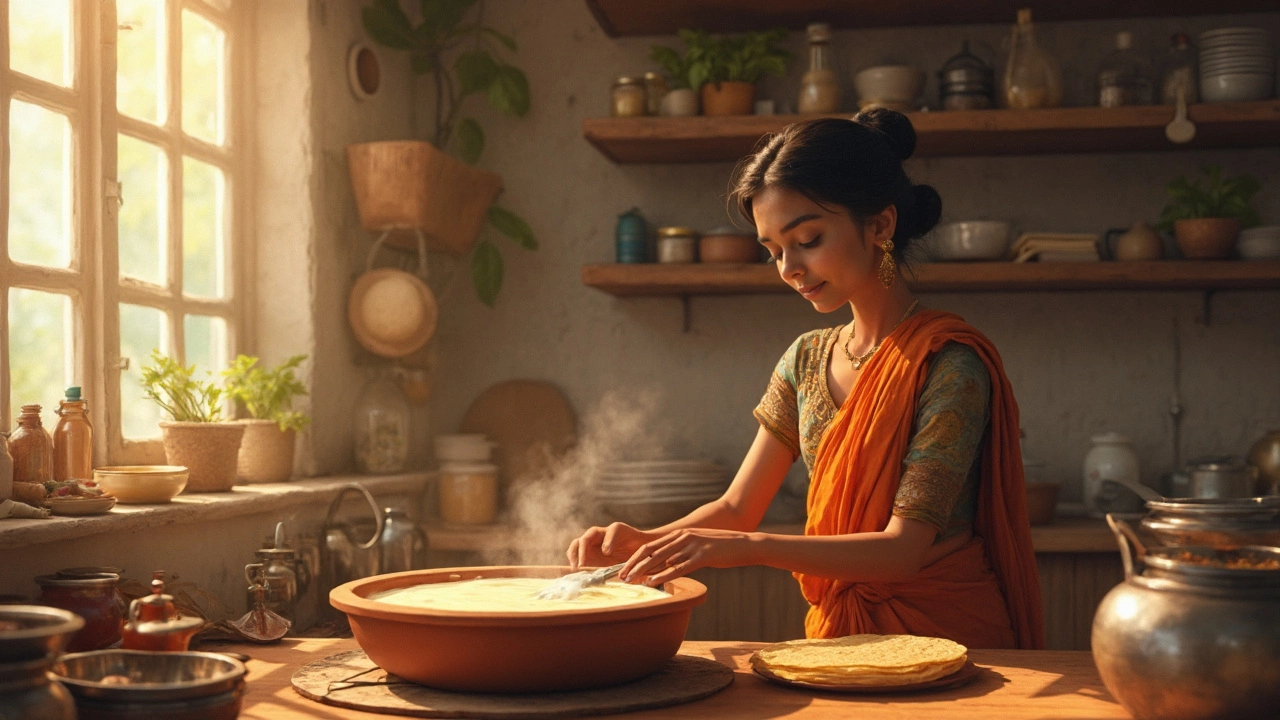Thick or Thin? How to Nail the Right Consistency in Indian Cooking
Ever wonder why some chutneys stick to the spoon while others run off like water? The secret is simple – it’s all about controlling thickness. Whether you’re making a silky dal, a chunky pickle, or a glaze for tandoori, the right consistency makes the dish taste better and look more appetizing.
Why Thickness Matters
Texture is the hidden flavor in Indian food. A thick sauce coats each grain of rice, letting the spices cling and release slowly. A thin gravy, on the other hand, spreads quickly, giving a lighter bite that’s perfect with flatbreads. Too thick and you end up with a paste that overwhelms the palate; too thin and the dish can feel watery, losing the depth of the spices.
Most home cooks judge thickness by eye, which works fine once you get a feel for it. But beginner cooks often ask: "Should I keep the lid on or off?" The answer depends on the dish. For chutneys that need to dry a bit and develop a glossy finish, keep the lid off so steam can escape. For soups and dal that should stay creamy, a lid helps retain moisture and prevents the liquid from evaporating too fast.
Simple Tricks to Adjust Consistency
1. Control the Heat. Low to medium heat lets liquids reduce slowly, giving you a chance to stir and check thickness. High heat makes the liquid disappear fast, often leaving lumps.
2. Add Starches Wisely. A spoonful of roasted gram flour (besan) or a splash of coconut milk thickens without adding heavy cream. Stir in a little at a time – you can always add more, but you can’t take it out.
3. Use the Right Pot. Wide, shallow pans increase surface area, speeding up evaporation for thicker sauces. Deep pots trap steam, keeping things thinner. Choose the pan that matches your goal.
4. Balance Water and Paste. When blending tomatoes or onions, start with less water than you think you’ll need. You can always thin out later with broth or water, but it’s hard to fix an over‑thick puree.
5. Finish with a Splash. A final dash of lemon juice, yogurt, or ghee not only brightens flavor but can loosen a sauce just enough for a smooth finish.
Here’s a quick test: dip a spoon into the sauce and lift it. If the liquid runs off in a steady stream and coats the back of the spoon, it’s thin. If it clings and forms a slow‑dripping line, it’s thick enough for gravies or chutneys.
Remember, the “right” thickness is often a matter of personal taste and the dish you’re serving. For biryani, a thin, aromatic broth keeps the rice fluffy. For a vegetable stir‑fry, a slightly thicker glaze makes each bite glossy and flavorful.
Next time you’re in the kitchen, ask yourself: do I want the sauce to hug the food or to slip around it? Adjust heat, add or subtract liquid, and you’ll get the perfect consistency every time.
With these easy tricks, you’ll stop guessing and start cooking with confidence. Thick or thin, you now have the tools to decide and deliver the perfect texture for any Indian recipe.
Should Dosa Batter Be Thick or Thin? Finding the Perfect Consistency
Finding the right consistency for dosa batter can make or break your dosa-making experience. Should it be thick like pancake batter or thin like crepe? This article explores the science behind dosa batter, highlights why consistency matters, and provides tips on how to adjust your batter for perfect dosas. Get hands-on advice to troubleshoot common issues and enhance your dosa-making skills.
